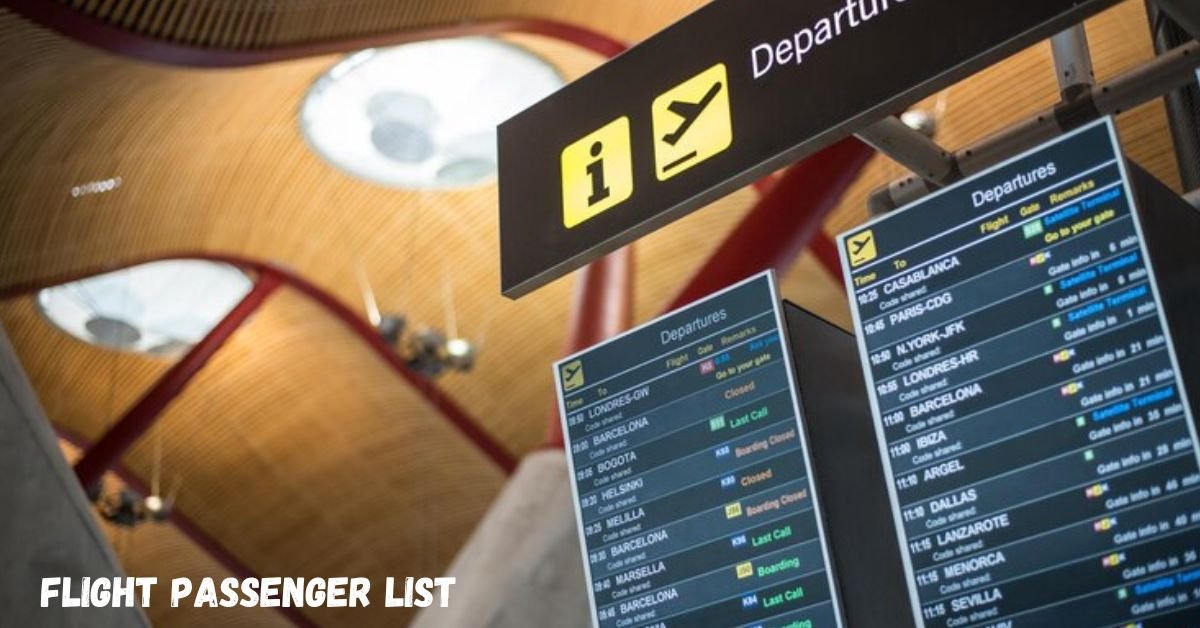Introduction of flight passenger list
Flight passenger list are essential components of the aviation industry, serving multiple purposes from operational efficiency to security and regulatory compliance. This article delves into the intricacies of flight passenger lists, exploring how airlines manage them, the systems involved, access policies, and the balance between utility and passenger privacy.
What is a Flight Passenger List?
A flight passenger list, often referred to as a passenger manifest, is a comprehensive record of all passengers scheduled to be on a specific flight. This list includes vital information such as:
- Passenger Names: Full names as they appear on travel documents.
- Seat Assignments: Specific seats allocated to each passenger.
- Special Service Requests (SSRs): Information on passengers requiring special assistance or services.
- Travel Document Details: Passport numbers, visa information, and other relevant documentation.
These lists are crucial for various stakeholders, including airlines, airport authorities, and government agencies, to ensure smooth operations and adherence to safety and security protocols.
Management of Passenger Lists
The management of passenger lists involves several sophisticated systems and processes designed to handle data efficiently and securely.
Passenger Service Systems (PSS)
At the heart of passenger list management lies the Passenger Service System (PSS). A PSS is an integrated suite of applications that manage various passenger-related functions:
- Reservation Systems: Handle booking and ticketing processes.
- Inventory Systems: Manage seat availability and fare calculations.
- Departure Control Systems (DCS): Oversee check-in, boarding, and load management.
These systems work in unison to ensure that passenger data is accurately captured, stored, and accessible as needed.
Departure Control Systems (DCS)
The Departure Control System is pivotal during the day of departure. It automates several critical functions:
- Check-In Processing: Verifying passenger identities and issuing boarding passes.
- Baggage Handling: Tracking checked luggage and ensuring it is loaded onto the correct aircraft.
- Load Control: Calculating weight and balance to ensure aircraft safety.
By automating these processes, the DCS enhances efficiency and reduces the likelihood of errors.
Advance Passenger Information System (APIS)
To bolster security, many countries require airlines to submit passenger information before departure through systems like the Advance Passenger Information System (APIS). APIS collects data such as:
- Full Name
- Date of Birth
- Nationality
- Travel Document Details
The destination country’s customs and border protection agencies receive this information to facilitate security screenings and expedite immigration procedures.
Access Policies and Privacy Concerns of flight passenger list
In this access to flight passenger lists is governed by strict policies to protect passenger privacy and comply with international regulations.
Access Restrictions
- Airline Personnel: Only authorized staff have access to passenger information, primarily for operational purposes.
- Government Agencies: Entities like customs and immigration may access passenger data for security and regulatory compliance.
- Third Parties: Access by third parties is heavily restricted and typically requires passenger consent or a legal mandate.
Privacy Regulations
Passenger data is sensitive and protected under various international laws and agreements. Key considerations include:
- Data Protection Laws: Regulations such as the General Data Protection Regulation (GDPR) in the European Union impose strict guidelines on handling personal data.
- International Agreements: Agreements between countries dictate how passenger data is shared and protected across borders.
Case Study: Secure flight passenger list
In the United States, the Transportation Security Administration (TSA) implements the Secure Flight program, which prescreens passenger information against government watchlists. This initiative aims to enhance security while ensuring passenger data is handled with high confidentiality.
Technological Solutions for Passenger Data Management
Advancements in technology have led to the development of sophisticated software solutions to manage passenger data effectively.
Passenger Management Software
Modern passenger management software offers features such as:
- Real-Time Data Processing: Immediate updates to passenger information across all systems.
- Integration Capabilities: Seamless interfacing with other airline systems and third-party applications.
- Enhanced Security Measures: Robust protocols to protect data from unauthorized access and breaches.
These tools streamline operations while ensuring compliance with privacy regulations.
Comparison of Leading Passenger Management Systems
To provide a clearer understanding of the available solutions, here is a comparison of some leading passenger management systems:
| Feature | SITA Passenger Flow Management | Amadeus EASE™ | MEXIA Omni-Channel |
|---|---|---|---|
| Real-Time Tracking | Yes | Yes | Yes |
| Integration with DCS | Yes | Yes | Yes |
| Customizable Interface | Yes | Yes | Yes |
| Advanced Analytics | Yes | Yes | Yes |
| Biometric Capabilities | Yes | Yes | Yes |
Note: Features are based on information available as of February 2025.
Balancing Operational Needs and Passenger Privacy
While the efficient management of passenger lists is vital for airline operations and security, it is equally important to uphold passenger privacy. Airlines and related entities must navigate the delicate balance between operational requirements and the ethical handling of personal data.
Best Practices for Protecting Passenger Data
- Data Minimization: Collect only the data necessary for specific purposes.
- Secure Storage: Implement robust encryption and security measures to protect stored data.
- Access Controls: Restrict data access to authorized personnel only.
- Regular Audits: Conduct periodic reviews to ensure compliance with data protection policies.
By adhering to these practices, airlines can foster trust with passengers and comply with global data protection standards.
Conclusion about flight passenger list
Flight passenger list are integral to the functioning of the aviation industry, serving purposes that range from operational efficiency to national security. The management of these lists involves complex systems designed to handle data accurately and securely. As technology advances, airlines have access to more sophisticated tools to manage passenger information. However, with these advancements comes the responsibility to protect passenger privacy and comply with international regulations. By implementing best practices and leveraging modern software solutions, the aviation industry can continue to enhance both operational efficiency and passenger trust.

